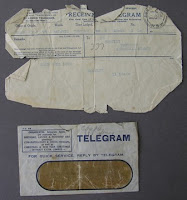Recently we were presented with a set of such challenges as we embarked on a six-month long project to conserve the heritage Council Chamber furniture from the Sydney Town Hall.
This suite of Australian red cedar furniture was originally made by William Coleman for the Council Chamber of the Sydney Town Hall in 1883. The furniture was built to a design by one of the architects for the Town Hall, John Hennessey.
Comprising a long D-end table in two separate sections, the Lord Mayoral chair, 17 tub chairs, and 4 long benches (2 curved, 2 straight), all pieces of the suite were showing the signs of having been very well-used over a long period of continual service to the Council.
The tub chairs and benches had been re-upholstered numerous times, most recently in a manner quite different to the original. The legs of the chairs had been substantially modified, with repairs, replacements and extensions, none of which matched the original intent or appearance of the chairs. The tables had suffered mainly due to age and use, as well as through the cutting of holes and slots for telephone and computer cables.
The brief from our client, the City of Sydney, was to return the suite of furniture close to its intended original appearance whilst ensuring that it retained the patina of age and history. In addition, as the furniture was proposed to continue to be used for public events and functions, it was important that the conserved items be functional.
As a result of the original design and fabrication of the furniture, we needed to stabilise all of the joints in the tub chairs, and drew on a range of techniques to do this including:
- Injection of animal hide glue
- Dismantling of joints (by unscrewing, as the chairs had no traditional mortice and tenon joints), cleaning and re-gluing
- Re-securing the screws
- Installation of large curved blocks to the inside of the seat using adhesive
We completed an assortment of other treatments in order to rectify damage caused by previous repairs or modifications to the tub chairs.
A decision was made at the beginning of the project to retain one of the seventeen tub chairs in the condition we received it in order to show the range of past repairs.
We decided to replace all of the leather during our conservation works, as none of the extant upholstery was original, nor did it look like the original. The tub chairs and benches were re-upholstered to match as closely as possible the original upholstery based on our interpretation of remnant physical evidence and the historic image above. Most notable is the recreation of the original buttoning.
Upon completion of the physical conservation works, the timber elements were refinished with shellac and waxed.
David West
International Conservation Services





 Photo: Close up of paint layer
Photo: Close up of paint layer Photo: After treatment
Photo: After treatment Photo: After treatment detail
Photo: After treatment detail







